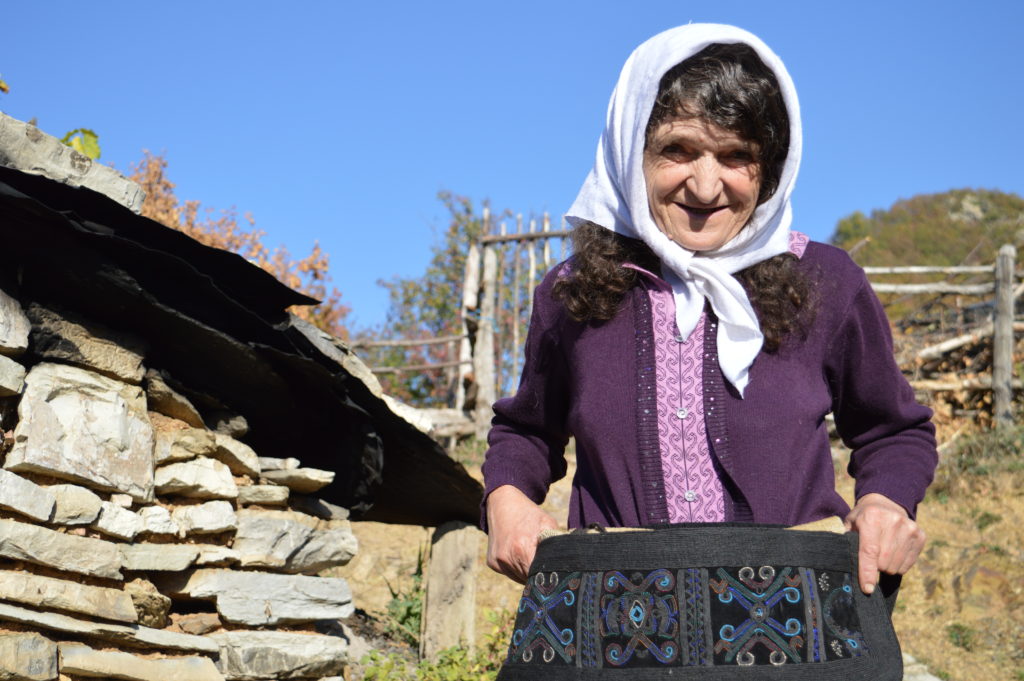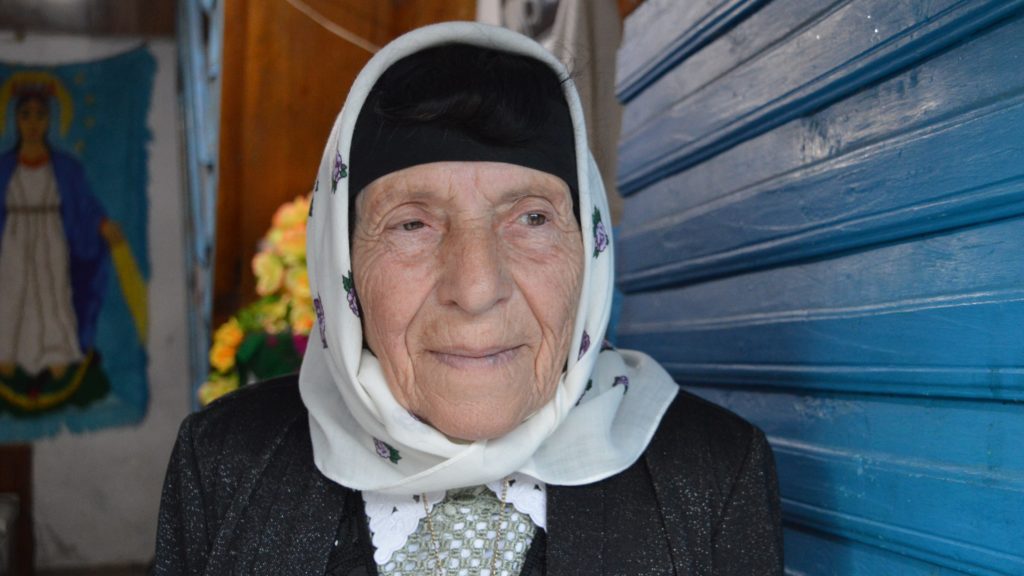Mothers and Daughters
When asked about their xhubleta, women often mention their mother. The dress has an inherent maternal emphasis, reinforced over thousands of years. Throughout history, the mother was the primary teacher for young women regarding the construction of the xhubleta.
“This is from my mother and this from my grandmother. The skirt from my grandmother, the postova from my mother.”
“Did you made it, who made it? Who made the xhubleta, did your grandmother made it herself?”
“My mother did this and my grandmother this one. They did it themselves.”
– File, 2018
File Nika’s story exemplifies the importance of a maternal figure. When she was only six years old, her mother passed away while giving birth to her sister. Traditionally, this would not have affected a girl’s learning of the xhubleta. “When you didn’t have a mother, then other relatives took the role of teaching the girls how to produce xhubleta. Such as aunt, it was always a member of the family that had big influence on the girl.” (Shkurtaj, 2018)
File did not have this family member to help teach her about the xhubleta. She inherited pieces of the 300 year old xhubleta owned by her mother and grandmother. Without either of them around she never learned to make them for herself, or what the patterns on it expressed. File does not recall ever seeing anyone wear a xhubleta, and has never worn one herself. (F. Nika, personal communication, Nov. 12, 2018).
“What do the patterns mean? What does this mean [pointing to patterns]. You said your grandmother did it. Any special meaning?”
“No. Just the flowers are used by painters for their paintings, and they also used flowers. Flowers from painters.”
– File, 2018
Prena was another woman that inherited her xhubleta from her mother. She wore the xhubleta from her mother on her wedding day and for several years after. However, Prena has not taken care of her dress.
“It is not in good shape. The xhubleta is not in good shape because [I] was not very lucky in my life because [my] husband died when [I] was 27, and [I] didn’t care anymore about the xhubleta to wear it afterwards”
– Prena, 2018
She stored the xhubleta in a gym bag, out of sight. This disruption in her life affected her daughter as well. Since Prena lost attraction for the dress, she did not pass on the knowledge of the dress to her daughter. Instead, her daughter wore a white dress instead of the xhubleta on her wedding, ending a tradition that stretched back generations (P. Anonymous, personal communication, Oct. 27, 2018).
Age Vuktilaj had a much different upbringing than both File and Prena. She had a much closer relationship to her mother, especially in crafting the xhubleta. As a very young girl Age recalls her mother preparing her to make her first xhubleta.
“I was seven years old, and my mother said to me ‘You are no longer a child.’
‘What am I now, mother?’
‘Now we have to see you as a girl, having respect for the elderly, to be humble, to talk less.’ So it was time then. Showing that now I have authority, for what I was wearing.”
Age, 2018
For Age, receiving her first xhubleta was a landmark in her life. On the first time she wore a xhubleta, she said “For me it felt like I was growing up” (A. Vuktilaj, personal communication, Nov. 12, 2018).
“When I was seven I wore it for the first time, because that was the tradition and that was what I was supposed to wear.”
“And how did you feel, did it seem normal to you?”
“Yes, it was normal for people from the mountains.”
– Age, 2018
Receiving her first xhubleta prepared Age for her transition from childhood to girlhood. From that day onward, Age wore her xhubleta every day. This was normal for northern Albanian girls (Dukgilaj, 2018). She had two white and black striped xhubleta, one for her day to day activities and another for special occasions, such as going to church or the bazaar. The costumes that the girls wore did not include the ornamentation that the older women had (Vuktilaj M., 2018).
In some areas it was seen as strange to not wear the xhubleta. “If they would wear something else, like a loose costume, they would mock her.” (D. Vaçoj, personal communication, Nov. 28th, 2018) As girls progressed toward womanhood and marriage, they began to construct their own xhubleta. Age started to create her own xhubleta at the age of nine with the assistance of her mother, who especially helped her embroider the intricate designs into her finer xhubleta (A. Vuktilaj, personal communication, Nov. 12, 2018). This maternal connection with the xhubleta extended to care of the garment, too.
“I was 9 years old when I started to wash my xhubleta, because my mother had no other female at home, and we had to do all the housework together, and she taught me how to wash my xhubleta. It takes very little water to wash the xhubleta, because water can release the dye from the black part, and the white part can’t be be dirty. And when it had to dry the white part always had to be hung up and the black part always had to be laid down. And as my mom said, I did. Often we had to separate the white part from the black part, to wash them separately so as not to injure the xhubleta, and then we sewed it again.”
Age Vuktilaj, 2018
The process of making the dress was very long and time consuming. Women recalled that it could take between two months (T. Bordaj, personal communication, Nov. 6, 2018) and a year (L. Sokoli, personal communication, Nov. 6, 2018) to craft a single xhubleta.
“We had a lot of time and we had a big house with livestock and we worked a lot. It would take 3 weeks. 3 weeks to sew.”
“How long did it take to make the whole thing?”
“It took a long time, it was a lot of work. We worked slowly.”
“How long did the process take, to do the whole thing?”
“It would take about 2 months.”
– Age, 2018

